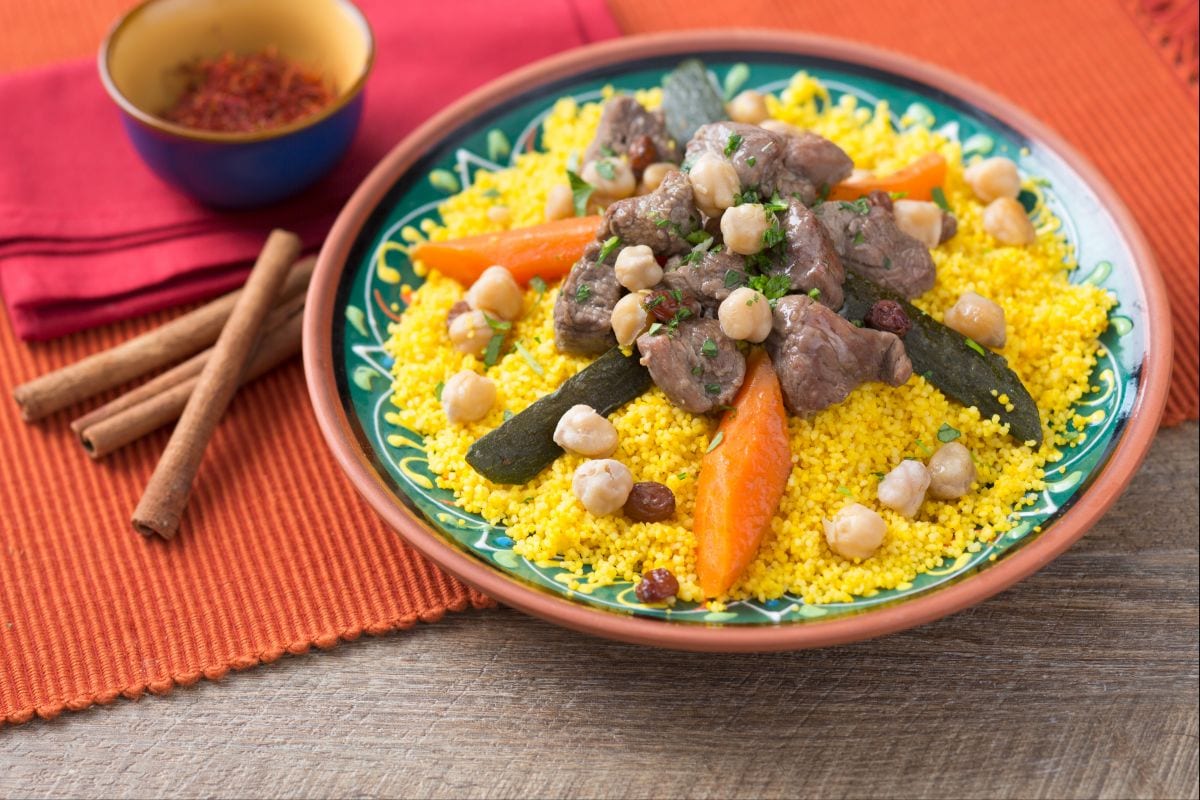Moroccan Filo Pastry Cigars
- Average
- 1 h 50 min

Moroccan couscous recipe—it's a real classic from the Maghreb region of North Africa. Honestly, it's all about bringing people together. You know, this dish is often served on a big platter, piled high with fluffy, tender couscous made from semolina. Then it’s topped with a rich stew of lamb and vegetables. Super tasty. The lamb? It becomes incredibly moist as it cooks with carrots, zucchini, and chickpeas. And it really soaks up those deep flavors from Moroccan spices like cinnamon and ginger. Traditionally, a special pot called a ‘cuscussiera’ is used to steam the couscous. This gives it a unique, light texture that’s hard to find elsewhere. It’s definitely meant for sharing, as folks gather to scoop up mouthfuls—golden grains mixed with sweet veggies and savory meat. Really, the authentic Moroccan couscous experience is all about layers of flavor and the joy of gathering.
Across North Africa, you’ll find many couscous variations—sometimes with chicken, sometimes just veggies. It all depends on what’s available or what the family likes. And here's the thing: that’s what makes this traditional Moroccan couscous so special. It fits all kinds of gatherings, from casual Sunday lunches to bigger parties. Pretty much. Some families add raisins for a sweet note or toss in extra spices to make the stew more tangy. Even though the main idea stays the same—steamed couscous, savory stew, and plenty of sharing—the details change from home to home.
This Moroccan couscous recipe isn’t just about food. It’s about community and making everyone feel welcome at the table. And the aroma? It fills the whole room with warm spices, really really bringing people together in a relaxed, informal way. It’s not just a meal; it’s a piece of North African tradition, offering a hearty and flavorful experience. When you’re in the mood for something not just tasty, but meaningful, this dish is the perfect blend of comfort and cultural richness. Really, you can’t go wrong.
You might also like:

To prepare Moroccan couscous, start by making the broth: after deboning the lamb leg, place the bone in a deep pot together with a cinnamon stick 1 and add whole black pepper 2 and salt 3.

Also add the carrots and onion that you have previously peeled and cut into pieces 4 and pour in the cold water 5. Bring to a boil and let it cook for 40 minutes, skimming as necessary using a skimmer 6.

In the meantime, cut the lamb leg meat into chunks 7, peel and grate the ginger 8, and slice the onion 9.

When the broth is ready, strain it using a sieve 10, collecting it in a pot that you will keep warm 11. At this point, pour the oil into a large pan, add the onion 12

the grated ginger 13, and stew everything, occasionally adding a ladle of broth to aid cooking and prevent burning 14. Let it cook for 10 minutes, and in the meantime peel the carrots 15

and cut them into three pieces, making a diagonal cut 16. Do the same with the zucchinis, wash and trim them: cut them in half lengthwise 17 and then cut them into three, diagonally 18.

Return to the sauté and add the lamb meat 19, salt 20, and cover the meat with the hot broth 21.

Cover with the lid 22 and let it cook for 30 minutes. After this time, add the zucchinis and carrots 23 and the precooked chickpeas 24.

Salt again 25, cover with a lid, and let it cook for another 20 minutes 26. When there are 5 minutes left before the stew is done, add the raisins 27.

Now take the couscous, spread it in a baking dish to create a thin layer, and add salt 28 and saffron 29. Pour about 200-250 g of hot broth 30.

It should completely cover the couscous 31. Cover the dish with plastic wrap and let the couscous swell for about 3 minutes, until it has absorbed all the broth 32. Once the broth has been completely absorbed, remove the plastic wrap and fluff the couscous with a fork to eliminate any lumps 33.

Finely chop the parsley 34 and then proceed with plating: in a large plate, pour the couscous and place the lamb pieces in the center and the vegetables in a radial pattern. Sprinkle with the chopped parsley 35 and serve 36: your Moroccan couscous is ready to be enjoyed!